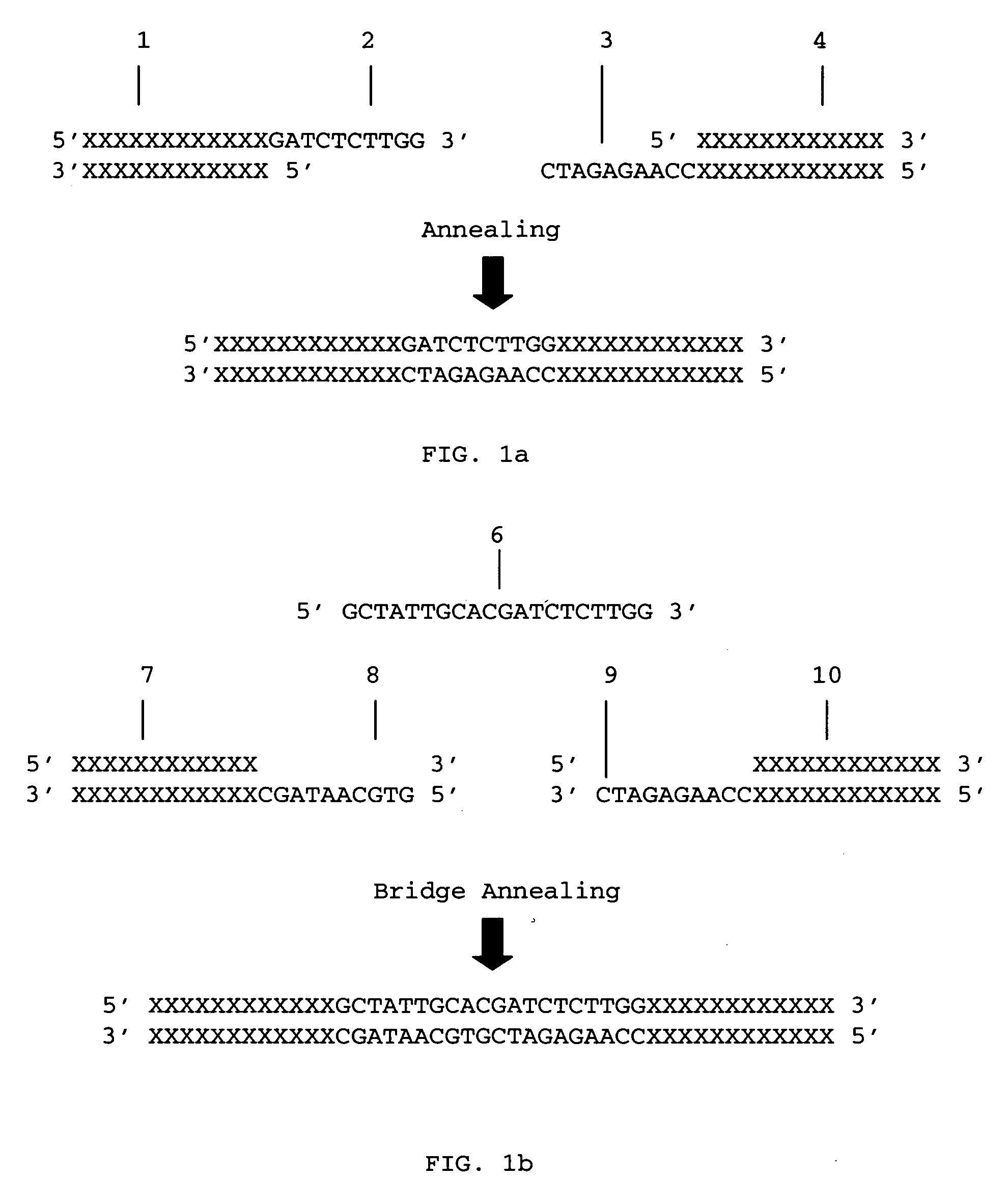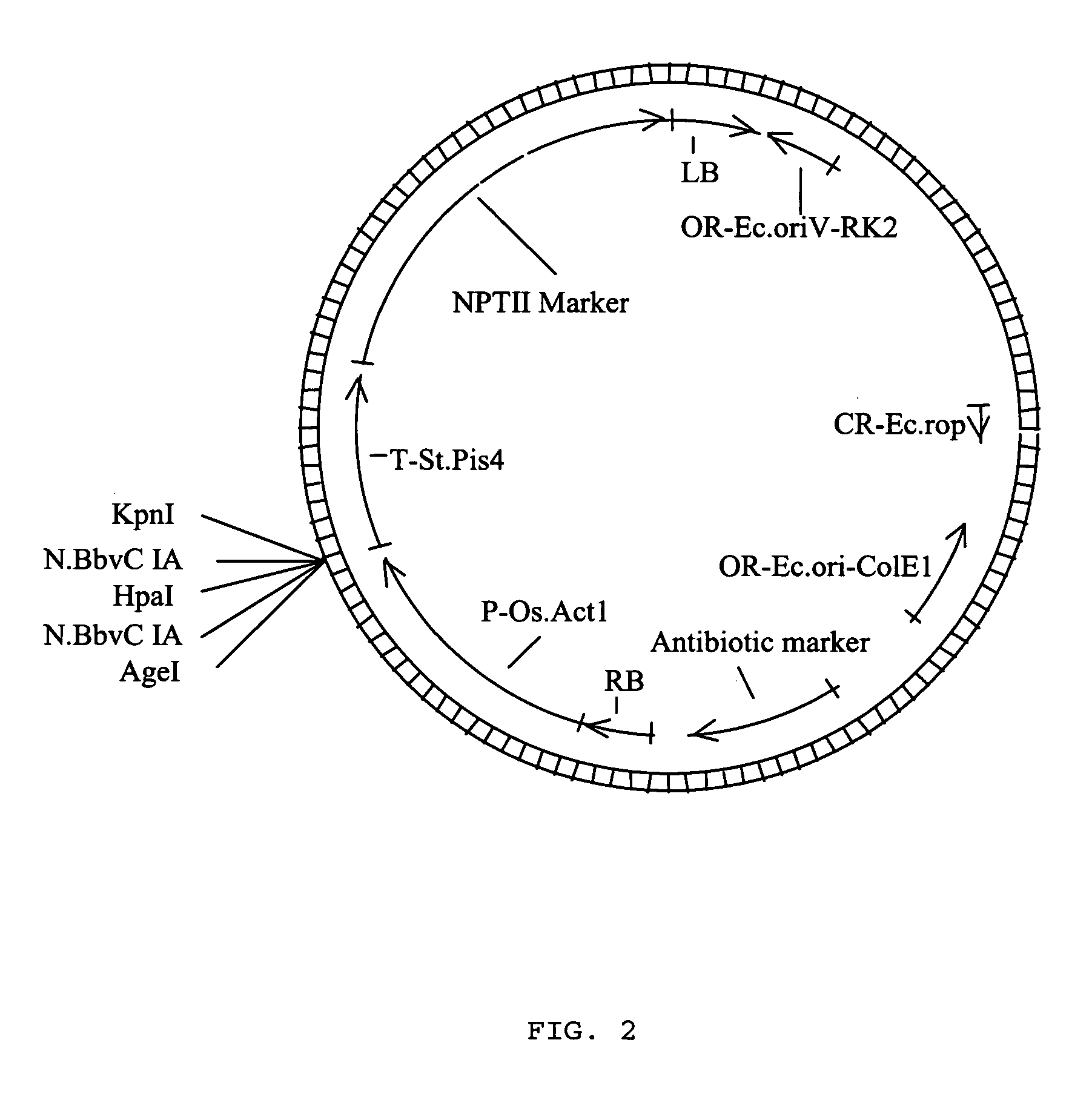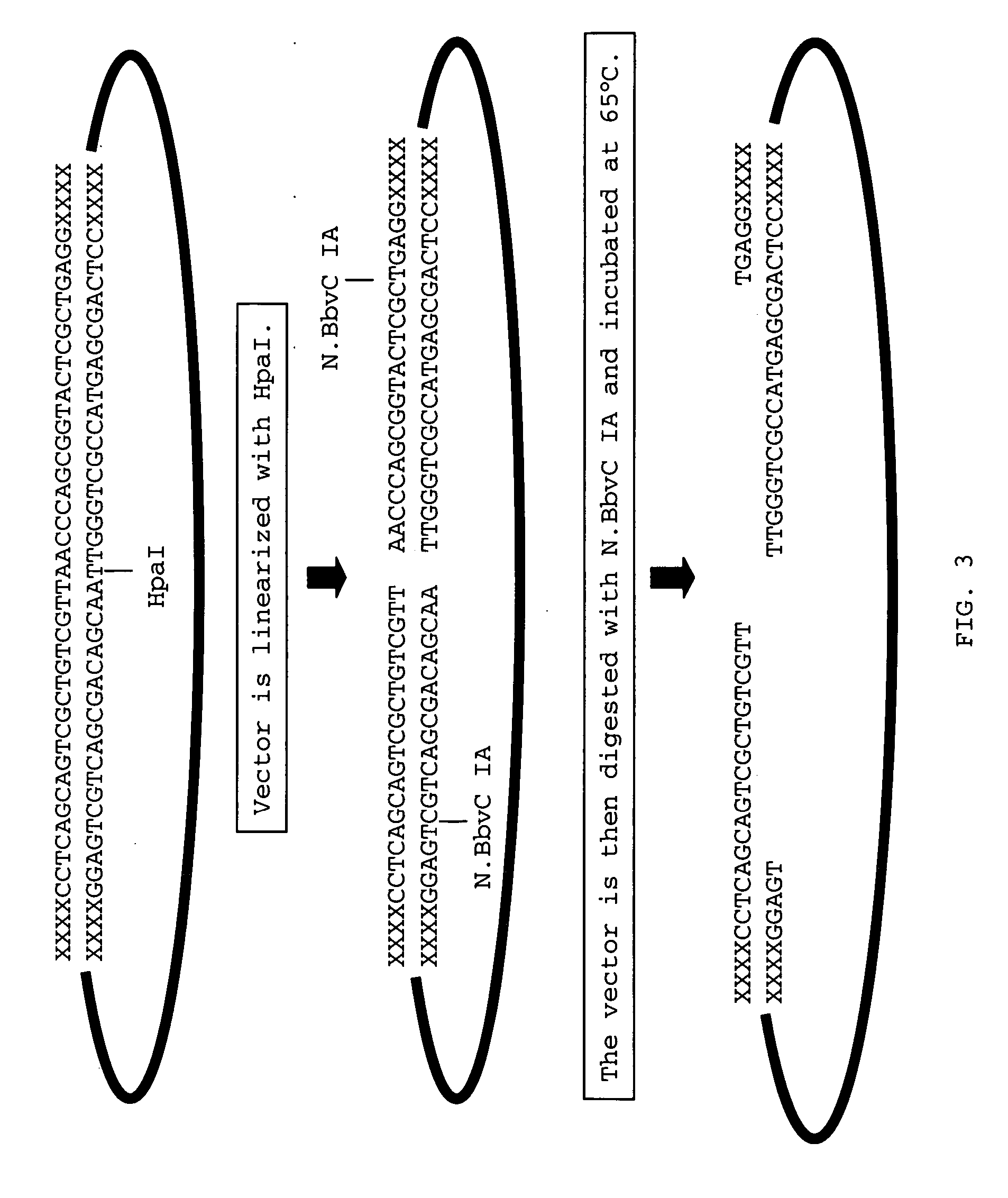Methods for ligation independent cloning of DNA
a ligation independent and dna technology, applied in the field of ligation independent cloning methods of dna, can solve the problem of conflicting information in dna sequencing
- Summary
- Abstract
- Description
- Claims
- Application Information
AI Technical Summary
Benefits of technology
Problems solved by technology
Method used
Image
Examples
example 1
[0037] This example illustrates the introduction of terminal, single-stranded DNA segments into a plasmid backbone. With reference to FIG. 3, a DNA adapter molecule, having the nucleotide sequence of SEQ ID NO:2, was inserted between an AgeI (ACCGGT) and a KpnI (GGTACC) restriction site in the plasmid of FIG. 2 using T4 DNA ligase (Invitrogen, Carlsbad, Calif.), inserting the adapter between promoter P-Os.Act) and the transcription termination sequence (T-St.Pis4). The resulting plasmid was linearized using the restriction endonuclease, HpaI (GTTAAC), then treated with the nicking endonuclease, N.BbvC IA (GCTGAGG). After digestion, the reaction was heated to 65 degree Celsius, causing the nicked strands of DNA to disassociate from their complementary DNA strands providing the resulting linearized, plasmid with two terminal, single-stranded DNA segments. Each terminal, single-stranded segment contained a unique sequence of nucleotides to allow assembly with another DNA molecule in a ...
example 2
[0038] This example illustrates the addition of two, terminal, single-stranded DNA segments to a protein coding sequence for insertion into the plasmid that has been linearized with terminal single-stranded DNA segments.
[0039] DNA encoding the Arabidopsis thaliana protein for a conserved oligomeric Golgi complex component-related protein (CGPG3721) has the nucleotide sequence of SEQ ID NO:3. Polymerase chain reaction was employed to produce the terminal, single-stranded DNA segments in the DNA molecule encoding CGPG3721. As shown in FIG. 5 the sequence of the CGPG3721 coding sequence (SEQ ID NO:3) was used to design the primers with nucleotide sequence of SEQ ID NO: 4 (sense) and 5 (antisense). Each primer comprises one of two terminal, single-stranded DNA segments to be added to the CGPG3721 coding sequence (SEQ ID NO:3). The primers were designed as follows:
[0040] Sense Primer:
5′-GCAGTCGCTGTCGTTACCATGGCAATGGAGGTTGGGG-3′
[0041] Antisense Primer:
[0042] 5′-GCGAGTACCGCTGGGTTCTAAGA...
example 3
[0071] This example illustrates the assembly of a DNA construct. With reference to FIG. 6 the plasmid illustrated in FIG. 4 was prepared by assembling the linearized plasmid 16 which was prepared in Example 1 and the DNA molecule 15 which was modified with terminal single-stranded DNA segments in Example 2. One microliter of the linearized plasmid (25 nanograms (ng)) was added to the Uracil-DNA Glycosylase reaction product prepared in Example 2 and incubated in a PTC-225 DNA Engine Tetrad™ thermal cycler using the following cycler parameters (“cycle parameter 3”):
[0072] 1. 65° for 5 minutes
[0073] 2. −0.1° / sec to 37° C.
[0074] 3. 37° C. forever
[0075] 4. End
[0076] The assembled DNA construct was transformed into ElectroMAX™ DH10B competent cells (Invitrogen, Carlsbad Calif.). A 0.5 μl aliquot from the assembly reaction was mixed with 20 μl of ElectroMAX™ DH 10B competent cells on ice and loaded into a MicroPulser 0.2 mm electroporation cuvette (Bio-Rad Laboratories Inc., Hercules ...
PUM
| Property | Measurement | Unit |
|---|---|---|
| volume | aaaaa | aaaaa |
| volume | aaaaa | aaaaa |
| volume | aaaaa | aaaaa |
Abstract
Description
Claims
Application Information
 Login to View More
Login to View More - R&D
- Intellectual Property
- Life Sciences
- Materials
- Tech Scout
- Unparalleled Data Quality
- Higher Quality Content
- 60% Fewer Hallucinations
Browse by: Latest US Patents, China's latest patents, Technical Efficacy Thesaurus, Application Domain, Technology Topic, Popular Technical Reports.
© 2025 PatSnap. All rights reserved.Legal|Privacy policy|Modern Slavery Act Transparency Statement|Sitemap|About US| Contact US: help@patsnap.com



